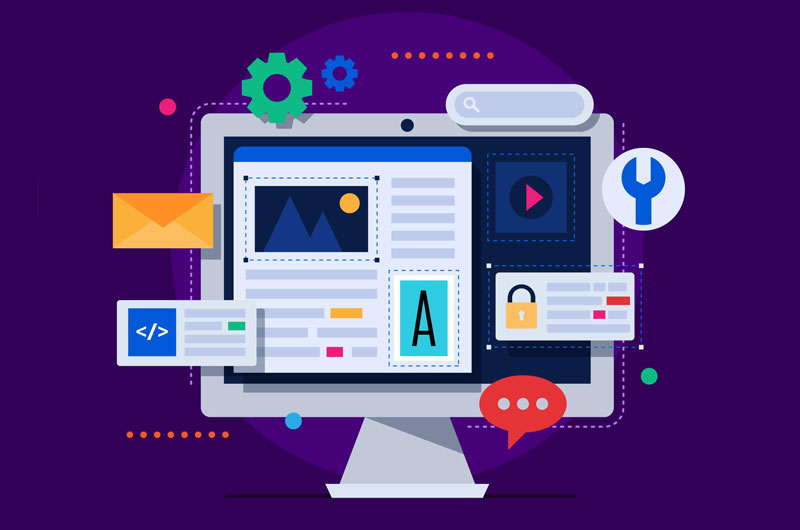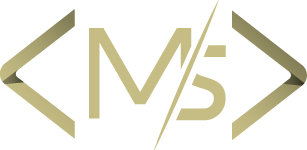
From the plain ‘black text on white screen’ on the first-ever website (http://info.cern.ch/hypertext/WWW/TheProject.html) to the modern-day responsive, material design-influenced interfaces, web design has come a long way in just a few short years.
So what does the future hold for this ever-changing industry? What trends will dominate the scene in 2022 and beyond? Here are 12 web design trends that we think will be big in the coming years.
1. Brutalist Typography
A strong contrast to today’s minimalist trend, brutalist typography is all about making a statement with large, bold text. This trend is inspired by the early days of the internet when designers were limited in their ability to create sophisticated layouts and had to get creative with simple HTML tags.
The core theme behind this rugged, in-your-face style is that “less is more.” By stripping away all the bells and whistles, designers are able to focus on delivering a clear message that is easy for users to understand.
2. Collage Layouts
With the rise of social media, we’ve seen a trend towards more visually-driven web design. This has led to an increase in the use of collage layouts, which are composed of multiple images or videos arranged in a grid.
Collage layouts are an effective way to tell a story or convey a mood without using any text. They are also well-suited for responsive design, as they can easily be rearranged to fit any screen size.
3. Contrast Colours
While many designers are moving towards more muted, natural colours, there is a growing trend of using high contrast colours to grab attention. This can be seen in the use of bright neon colours or large swathes of black and white – a subtle nod to the aesthetics of the 80’s and 90’s.
This trend is particularly effective when used sparingly, such as in call-to-action buttons or headlines. When used correctly, contrast colours can help guide users’ eyes to the most important parts of your design.
4. Creative Scrolling
Gone are the days of boring, linear scrolling. Today’s users expect a more interactive and engaging experience, which has led to the rise of creative scrolling techniques – also fondly called ‘scrolly-telling’.
One popular technique is the parallax scroll, which uses layered images that move at different speeds to create a sense of depth and movement. This can be used to great effect in storytelling or to add an element of fun and playfulness to your design.
Other creative scrolling techniques include the use of animated elements, video backgrounds, and even interactive games. The sky is the limit when it comes to creative scrolling, so don’t be afraid to experiment with this trend.
5. Dark UI
After years of bright, white interfaces, designers are starting to embrace the dark side with what is known as a ‘dark UI’. This trend is often used in conjunction with high contrast colours to really make elements pop.
Dark UIs can have a variety of benefits, such as reducing eye strain (especially in low-light conditions), helping to focus attention on specific elements, and creating a feeling of sophistication and luxury.
The edgy, mysterious look of a dark UI is also popular with Gen-Z users (especially gamers and those in the creative industries), who are known for their love of all things alternative.
6. Gender Neutral Design
The last couple of years has seen a growing movement toward gender equality and inclusivity, which has started to manifest itself in web design. One of the most notable trends is the rise of ‘gender-neutral’ designs.
This trend focuses on creating interfaces that are not biased towards anyone’s gender. This means using neutral colours, avoiding stereotypes, and using inclusive language.
No more hot pink themes for beauty websites or aggressive fonts for ‘manly’ brands – gender-neutral design is important for creating interfaces that are accessible to everyone, regardless of their gender identity.
7. Glassmorphism
We can’t talk about web designing trends without mentioning the hottest design trend of the past few years: glassmorphism. This style is characterized by three elements – transparency, pastel colours, and light borders.
The overall effect is something that looks ethereal and dream-like, which has helped it become extremely popular – so much so that even Apple and Microsoft have started using it in their own designs.
While glassmorphism might be starting to feel a little overdone, we think it’s still got some legs and will continue to be popular in the coming years.
8. Hand-drawn Elements
In a world of digital perfection, there is a growing trend of using hand-drawn elements to add a touch of personality and humanism to your design. This can be anything from simple illustrations and icons to full-page ‘sketches’ that help tell your brand’s story.
The key to making this trend work is to use it sparingly and in strategic places. Too many hand-drawn elements can make your design look unprofessional, so use them to highlight key points or add an element of fun.
This trend is also a great way to add some personality to otherwise bland, corporate designs.
9. Kinetic Typography
Kinetic typography is a trend that combines moving text with other graphic elements, such as shapes and images. This can be used to create simple animations, such as scrolling text or fading in/out effects.
If you’ve ever watched a Star Wars movie, you would have seen the iconic opening crawl – this is an example of kinetic typography in action.
This trend is often used for website titles and headlines, as it helps to grab attention and add a sense of drama. However, it can also be used sparingly in other parts of your design, such as in body copy or call-to-action buttons.
10. Memphis Design
The Memphis design trend is all about bold patterns, shapes, and colours. This 80’s-inspired style is making a comeback in a big way, with designers using it to create retro-futuristic designs that are both eye-catching and attention-grabbing.
One of the best things about this trend is that it can be used in a variety of ways, from small accent pieces to large-scale murals. If you’re feeling daring, you can even use Memphis elements in your website design.
Just be warned – this trend is not for the faint-hearted!
11. Micro Animations
Micro animations are a trend that is often used to add subtle interaction and feedback to a design. This can be anything from a button that pulsates when you hover over it, to an image that changes shape as you scroll down the page.
This trend is especially popular with mobile app designs, as it helps to make the user experience more engaging.
By adding an element of animation, you can help guide users through your design and add a touch of charm and personality. Plus, it makes your websites a whole lot of fun to use!
12. Off-Grid Layouts
The traditional grid layout is starting to feel a little bit outdated, with more and more designers moving towards off-grid layouts. This trend is all about breaking out of the box and getting creative with your design.
Off-grid layouts can be used to create a variety of different looks, from asymmetrical designs to multi-column layouts. This trend is perfect for those who want to add a bit of uniqueness to their design.
Just be warned – off-grid layouts can be tricky to get right, so make sure you have a good understanding of grid theory before you start playing around with this trend.
13. Retro Futurism
Retrofuturism is a trend that combines vintage aesthetics with modern design elements. This can be anything from using retro fonts and colours to creating ‘futuristic’ illustrations and graphics.
This trend is perfect for those who want to add a bit of nostalgia to their design. Plus, it’s a great way to make your design stand out from the crowd.
14. Split-screen Layouts
Split-screen layouts are a great way to showcase multiple pieces of content on a single screen. This trend is perfect for those who want to make the most of their website’s real estate.
By using a split-screen layout, you can easily add more content without making your design feel cluttered or overwhelming. Don’t overdo it though – a little goes a long way with this trend.
15. Visible Borders
Borders are making a comeback in a big way, with more and more designers using them to add definition and structure to their designs.
This trend is especially popular with web designs, as it helps to create a visual hierarchy that is easy to follow. This allows you to pack a ton of content into a single screen without making it feel cluttered or overwhelming.
Remember, the borders don’t have to be rectangular or square – they can be any shape you want!
Conclusion
With these 15 web design trends, you can easily stay ahead of the curve and create a website that is both stylish and up-to-date in 2022. Just remember to have fun with your design and don’t be afraid to experiment!
What are your thoughts on these web design trends? Are there any that you’re particularly excited about? Let us know in the comments below!


